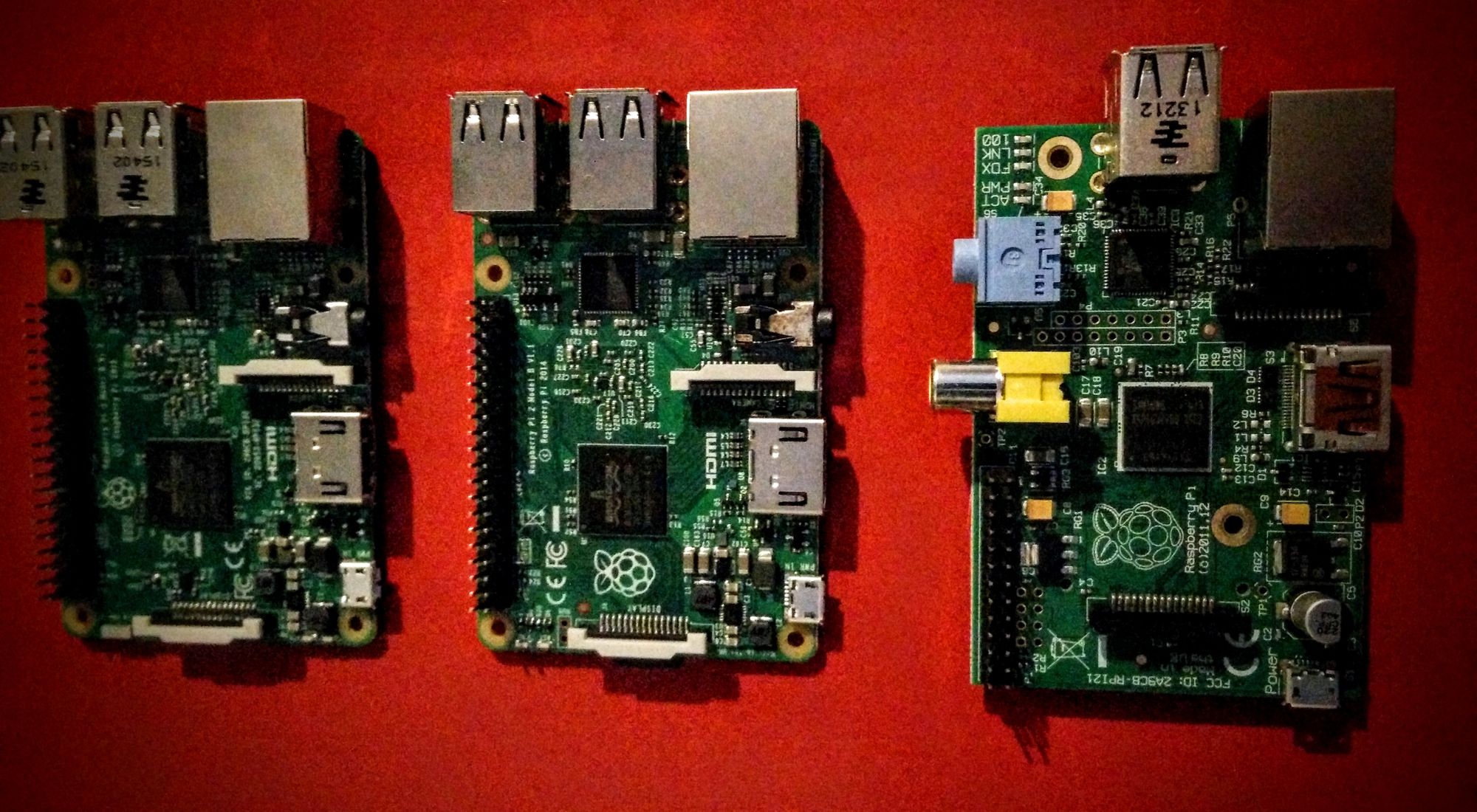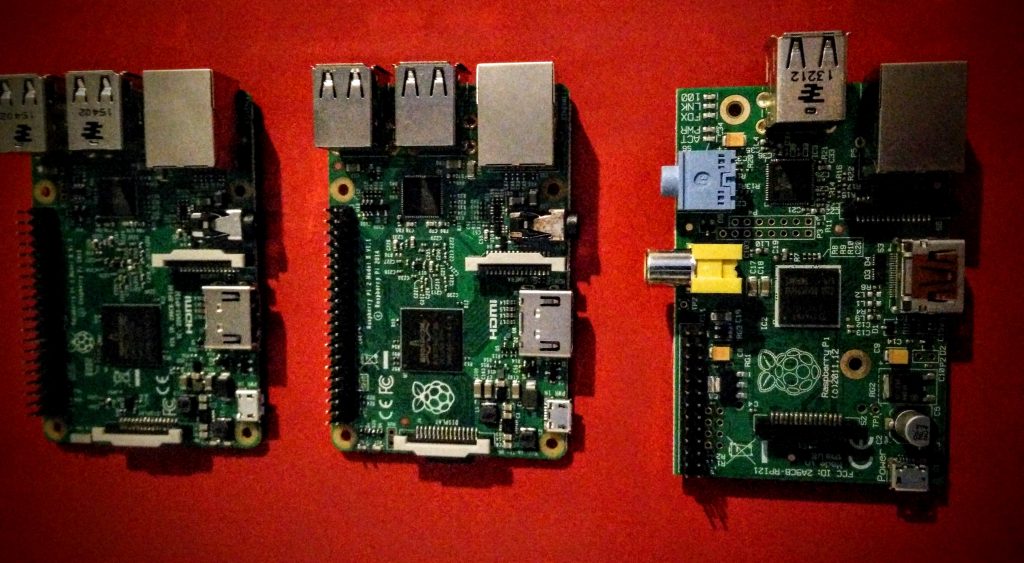The Raspberry Pi 1, 2 and 3 compared
The Raspberry Pi 3 has now launched. The 3rd generation has many improvements over its predecessor. Let's see how it compares to the older models.

The Raspberry Pi 3 has now launched. The 3rd generation has many improvements over its predecessor. Let's see how it compares to the older models.
Raspberry Pi evolution
Originally, this site was hosted from a Raspberry Pi Model B Rev 1, and surprisingly it was very capable. The only issue was the 256mb RAM which would quickly fill. To overcome this, I changed the boot device to be a high-quality USB flash drive (find out how in this tutorial) where swap took over once the memory was full.
The rev 2 of the Model B saw an increase to 512mb of RAM which made all the difference. The Raspberry Pi 2 launched with a welcomed performance boost with a multicore processor and an increase in memory to 1GB. Raspberry Pi has now launched with another boost in processing power, and the addition of WiFi.
Tech specs dfferences between Raspberry Pi 1, 2 and 3
Above I've summarised some of the differences, below are the actual differences between each of the models.
| Raspberry Pi | Raspberry Pi 2 | Raspberry Pi 3 | |
|---|---|---|---|
| Released | February 2012 | February 2015 | February 2016 |
| CPU | ARM1176JZF-S | ARM Cortex-A7 | ARM Cortex-A53 |
| CPU speed | 700MHz single core | 900MHz quad core | 1,200MHz quad core |
| RAM | 512MB 256MB Rev 1 | 1GB | 1GB |
| GPU | Broadcom Videocore IV | Broadcom Videocore IV | Broadcom Videocore IV |
| Storage | SDHC slot MicroSDHC Model A+ and B+ | MicroSDHC slot | MicroSDHC slot |
| USB Ports | 2 on Model B | 4 | 4 |
| WiFi | No built-in wifi | No built-in wifi | 802.11n and Bluetooth 4.1 |
Operating Systems
The operating system recommended by Raspberry Pi on the first two generations is their own port of Linux, Raspbian OS, but will run other ports and Risc OS.
Raspberry Pi 3 brings new capabilities, and officially runs Windows 10 IoT core and Ubuntu, a welcomed addition.
Physical differences between Raspberry Pi 1, 2 and 3
The physical dimensions hasn't changed (much) between models. Instead, the additional capabilities have been added to the credit card-sized PCB. The addition of more IO, USB and bumped up performance has made all the difference.
 Pictured, left to right: Raspberry Pi 3, 2 and 1
Pictured, left to right: Raspberry Pi 3, 2 and 1
 Pictured left to right: Raspberry Pi 1, 2 and 3
Pictured left to right: Raspberry Pi 1, 2 and 3
What next?
Over the next few weeks, I'll be benchmarking the models and adding a tutorial on how to create a Ubuntu-based web server on Raspberry Pi 3.
